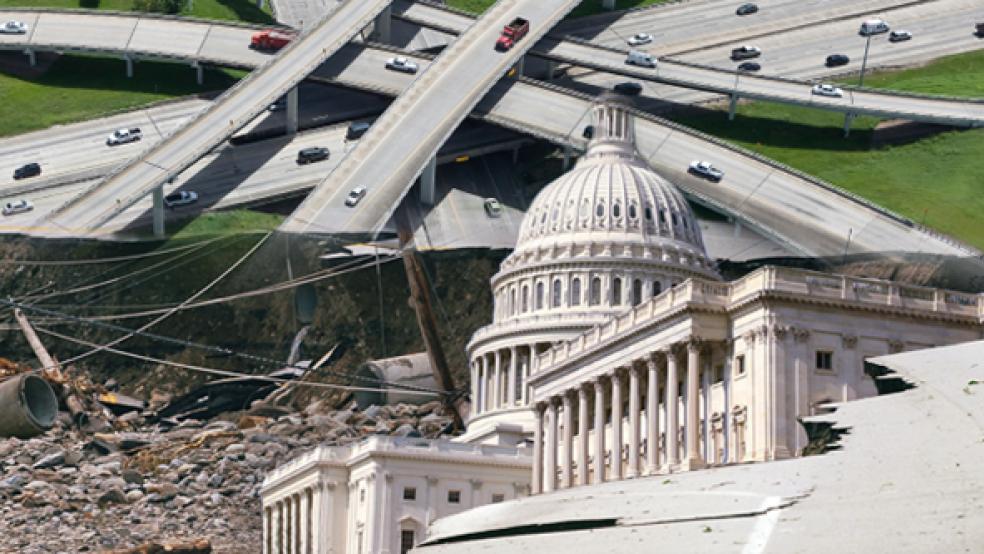The Federal Reserve’s decision to finally start raising interest rates last week was good news to some, including bond investors, retirees and others who have watched fixed income returns stagnate in the past seven years of a zero-interest rate environment. But the news is less good for those who put off necessary capital investment during more than half a decade of the easiest money policy in the Fed’s history.
Chief among those likely to be regretting the failure to take advantage of unprecedentedly cheap borrowing is the U.S. government and, by extension, the U.S. taxpayer. Infrastructure in the U.S. is widely viewed as being in desperate need of repair. From highways, bridges and airports to harbors, railroads and the power grid, are all in need of modernization.
Related: What the Bond Market Knows that the Stock Market Doesn’t
These are investments that can be – and have been – delayed, but that can’t be avoided forever. Members of Congress missed the chance to fully fund needed infrastructure investment at the time when it would both have done the most good and been cheapest.
Interest rates are rising now and are likely to continue doing so for the foreseeable future. Even so, the argument for major infrastructure spending is still strong.
“It’s not like capital was cheap and now capital is expensive,” said economist Jared Bernstein, a senior fellow at the Center on Budget and Policy Priorities in Washington. “Any impulse to do infrastructure investment should not be thwarted by a small rate hike.”
However, he said, every interest rate increase, however small, will cascade through future federal budgets in the form of higher debt service. That means that not only will every dollar borrowed to support infrastructure spending cost more, but also that there will be fewer dollars to spend in the first place, because the debt service on existing government obligations will be rising as well.
Related: Six Years and $17 Billion Wasted in Afghanistan with Nothing to Show for It
“As interest rates rise, if we borrow to do the things we need to do, it’s more costly to service that debt,” Bernstein said.
How much more costly?
In terms of the total outstanding debt held by the public -- about $13 trillion – Bernstein said, “A quarter of a basis point is in the tens of billions of dollars per year. That is the part of the budget that is growing most quickly.”
Bernstein is among the many economists who bemoan the failure of lawmakers to seize the opportunity to invest in infrastructure years ago, when the economy was still stagnant in the wake of the Great Recession. With unemployment high and infrastructure projects guaranteed to create jobs, it seemed obvious what the government should have been doing, he said.
Related: Congress to Pentagon – Don’t Even Think About Closing Military Bases
“In an environment where borrowing is incredibly cheap? Add to that the fact that infrastructure needs a lot of work? It was a slam-dunk.”
If it was a slam-dunk then, it’s at least an uncontested layup now, and Congress should take advantage of it.





